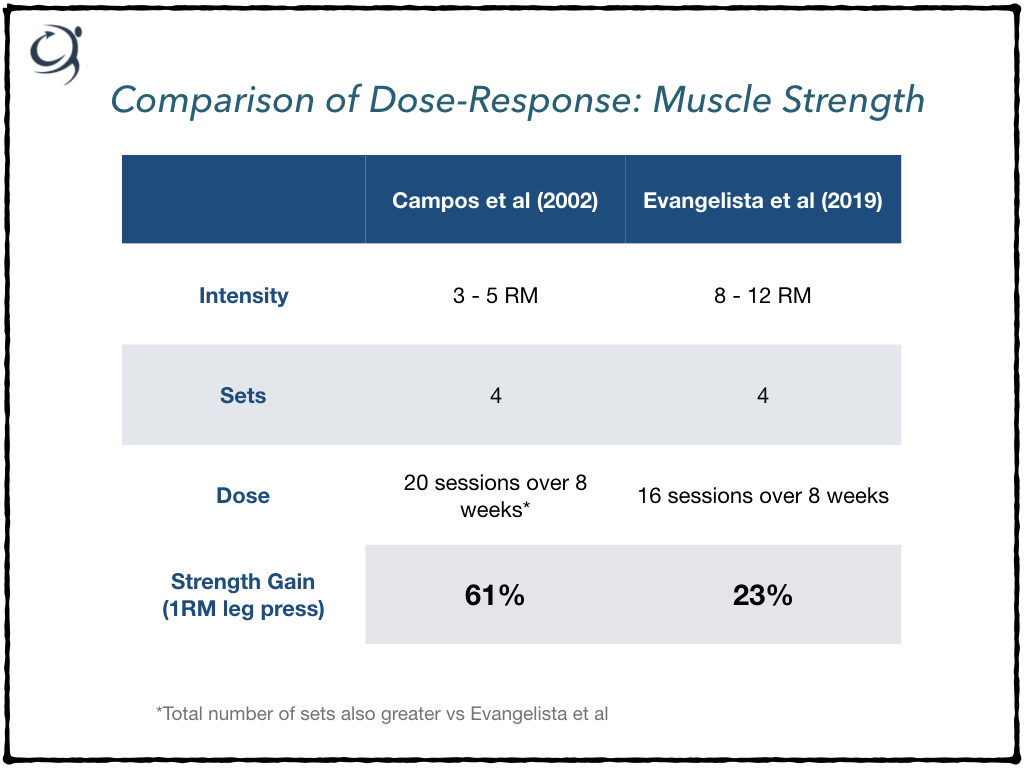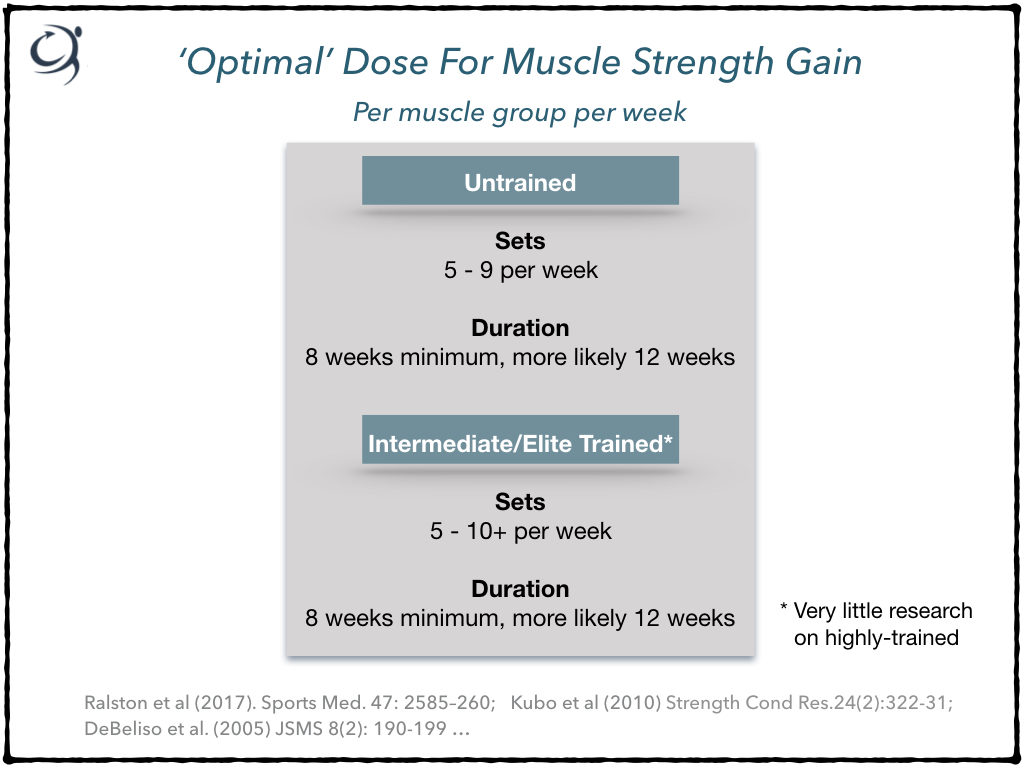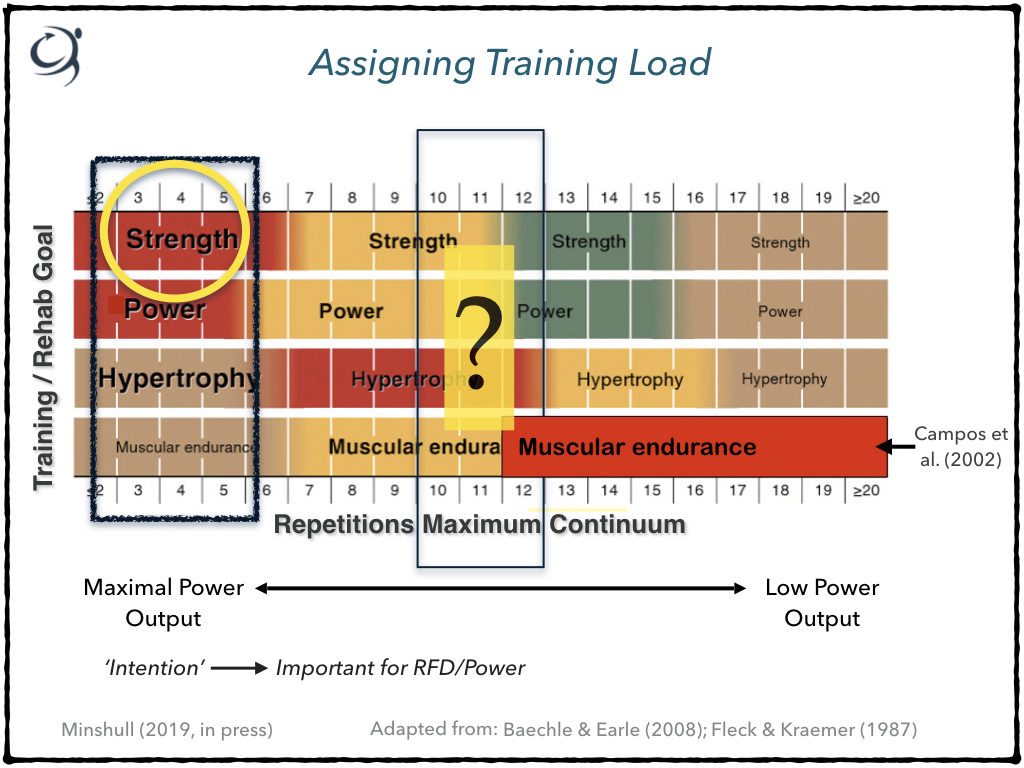Hey everyone, this week we’re going to tie up a few things. Having nailed the basics of Definitions and the Principles of Training (POT), we can now sensibly progress to answering the questions like why 3 sets of 10 isn’t good enough.:
– Should we move away from 3 sets of 10-12 reps?
– Should I do 8 reps with heavy weights or 30 reps with a lighter weight?
– How do you manipulate load, reps and sets to achieve specific goals
Thank you to people such as @dansilver32, @Retlouping and @tomgoom for firing these questions over.
3 Sets of 10; What Is Your Training Aim?
First off, a big fat YES, to ‘should we more away from 3 sets of 10-12 reps‘! I can’t shout this loud enough. Okay, some of you may argue for its utility, but for me, this can only really be an effective training stimulus for:
- familiarising tissue to accommodate load (which would be in the acute phase of rehab) OR
- when you stipulate lift to failure (the RM principle), and even then we can do better!
An educated guess would be that we generally give out these exercises on printed pieces of paper without individualising the prescription OR stipulating what determines exercise cessation (i.e. the intensity of the exercise).
So, in determining the exercise prescription and the manipulation of reps / sets / intensity you need to be specific about what you want to achieve (the specificity part of the POT). From a muscle performance perspective we can broadly focus on:
-
- Strength
- Power
- Endurance
In last week’s post I proposed a way of determining what’s important and when throughout a rehabilitation programme using the periodisation principle. We know that often patients need to make improvements across several performance outcomes, however, we also know we require a structured approach and discrete focus on each to achieve optimal improvements.
Assigning The Training Load
Here are some basic principles to follow when assigning your muscle rehabilitation interventions. First, have a look at the figure below. A bit busy, I know, but focus on the Repetitions Maximum Continuum bit first. The numbers indicate the intensity of the exercise: 5 RM = a load that can only be lifted 5 times; 12 RM = a load that can only be lifted 12 times, and so on…
Now look at the size of the text: Strength; Power, Hypertrophy, Muscular Endurance. The larger the size of text, the larger the training stimulus at that corresponding intensity. So, if we look at 10-12 RM where I’ve placed the question mark, we can see that we’re not really maximising any training stimulus. Another nail in the coffin for 10-12 reps?!
Training Load For Endurance
For me this is the easiest of the 3 to rehab. In general, as shown above, resistance training with moderate to low weights and high repetitions has been shown by most studies to be the most effective method to improve local muscular endurance. To be pedantic, we could ask what type of muscular endurance are you focussing on – high-intensity or low intensity? This will be determined by your patient end-goals.
If you look at the figure again you’ll see which RM range you need to improve endurance. if we’re truly working to failure, (which most exercise prescriptions don’t) 12RM can actually provoke a high-intensity muscle endurance adaptations, as illustrated in the classic study by Campos et al (2002)…so potentially 12RM isn’t all that bad, if done properly!
Training Load For Strength
3-5 RM. Yes, that heavy! You may read studies that have measured strength gains using 8-12RM, or greater, however, when you compare the improvements made, invariably they’re curtailed in the lighter load vs. heavier load studies/conditions.

In the comparison above the absolute dose was higher in the Campos study, however, the difference between strength gains is stark and illustrates the general superiority for higher loads for optimising strength gain, a statement supported by a recent systematic review: gains in 1RM strength are greatest in high- versus low-load training (Schoenfeld et al. 2017). So, if you’re looking to be most effective in a limited time it’s 3-5RM !
Training Load For Power
Remember, power (or rate of force development [RFD]) is the speed of muscle force production, which is determined by factor such as neural drive, fast twitch motor unit recruitment and discharge rate and to some degree the rate of stretch of the elastic component in series with the muscle. So, very similar to the physiologic determinants of muscle strength. It’s not surprising, therefore, that strength training can effect changes in power. The crucial difference is the INTENT to lift quickly and explosively. The external output might not be very fast – imagine how quickly you can lift a 5RM weight from the floor in a deadlift (!), but if the intention needs to be there.
Other modes of power training include:
- Ballistic training – The aim is to maximise the acceleration during concentric activation, such as throwing weighted object, jumping with weights and weightlifting derivatives, such as the ‘clean’
- Plyometric Training – Involves a stretch-shortening of the muscle and muscle-tendon unit, a preceding eccentric phase and storage and deployment of ‘elastic energy’ during the concentric phase. Interestingly, weightlifting movements may produce similar improvements in vertical jump height compared to plyometric training.
The ultimate training prescription to optimise power development doesn’t exist, it depends on what you’re measuring and how (e.g. RFD and power are measured differently), the most important thing is the explosive intent to shift the load and the maintenance of a moderate to heavy load. Reps, therefore, will be relatively low <8 to minimise fatigue and maximise fast twitch motor unit recruitment and discharge rate.
Dose – Sets & Duration…?
The level of improvement, in addition to your training/rehabilitation programme characteristics will be determined by your patient characteristics, which includes if they are a novice or ‘highly’ resistance-trained. Note here that the majority of well-conducted studies that examine the dose-response are typically conducted with non-resistance trained young men. Yes that sounds like a Undergrad university sample to me too 😉 So, there’s a lot more research to be done and with hesitancy we extrapolate to the wider population. But is it possible to extract something like an ‘optimum’ dose..? Perhaps for strength…
I’ve spent many hours embedded in this literature, and in my opinion this is the best evidence at the present for dosage:

Clearly, all of these sets will not be performed in the same session (!) and you can determine the intensity/load of the repetitions in each set using the table at the start. At the very least this gives you a starting point and a something to monitor and adapt based on patient progression. In all honesty, and this is purely personal opinion, I think with very well trained individuals, more than 10 sets (50 reps) per muscle group per week would be needed to optimise a strength gain. But as I said, I don’t have any great volume of scientific evidence for this.
So, there you have it, I hope you find this useful. At the very least you have an objective structure to follow that can be manipulated commensurate with your outcome measurements with each patient.
[retweet]
IT’S HERE! Download your Free 14-page guide: Strength & Conditioning for Therapists
References
Campos et al. (2002). Eur J Appl Physiol. 88(1-2):50-60
Evangelista et al. (2019). J Strength Cond Res. doi: 10.1519/JSC.0000000000003036. [Epub ahead of print]
Schoenfeld et al. (2017). J Strength Cond Res. 31(12):3508-3523



